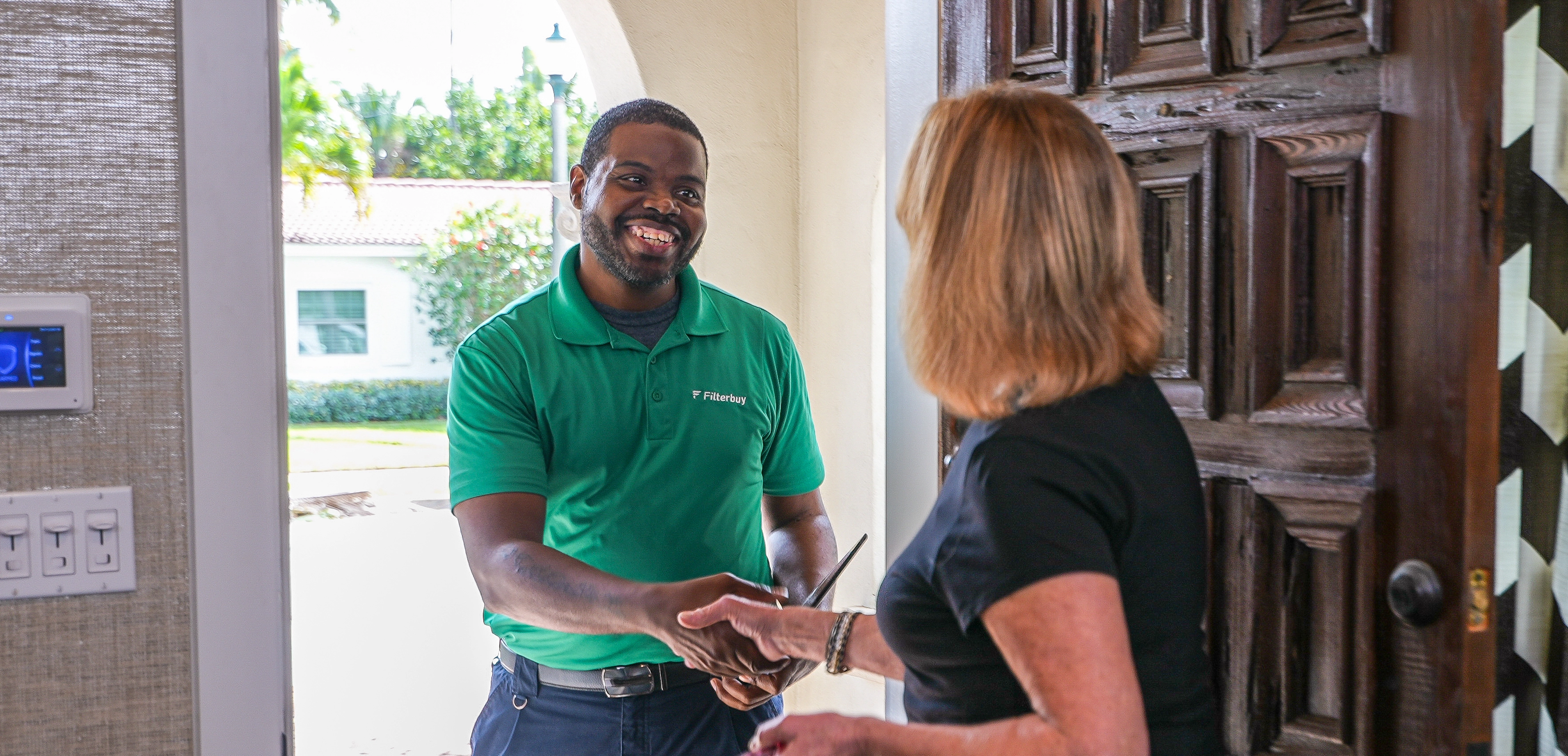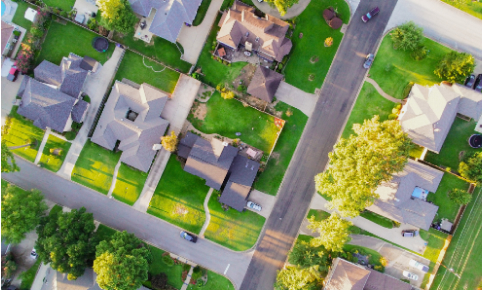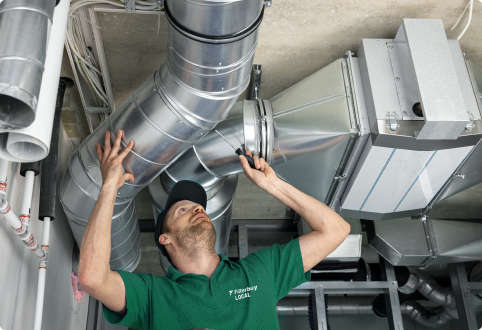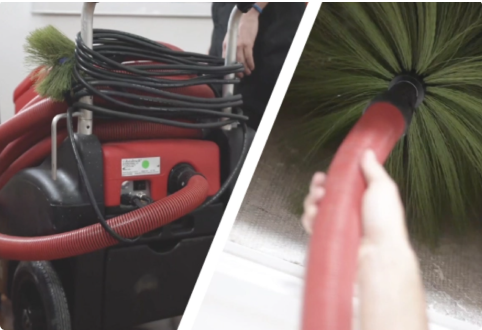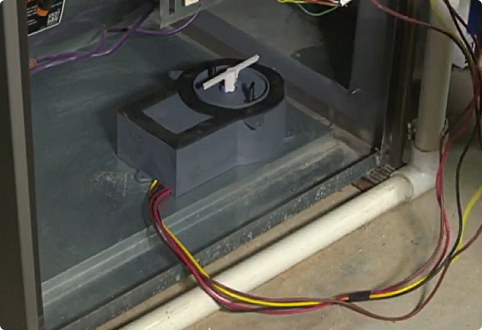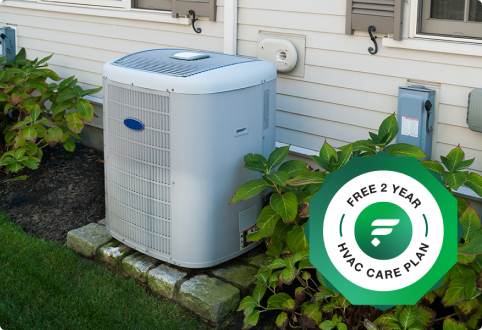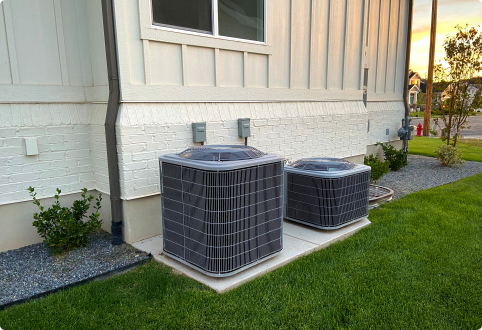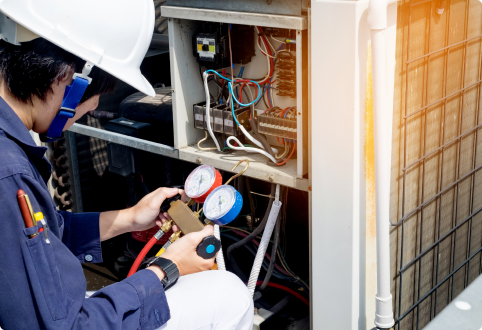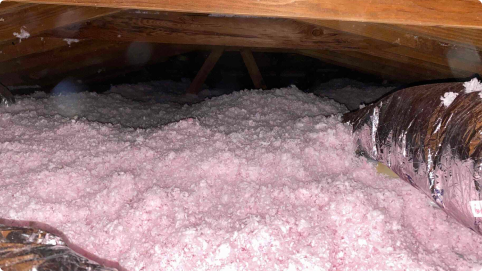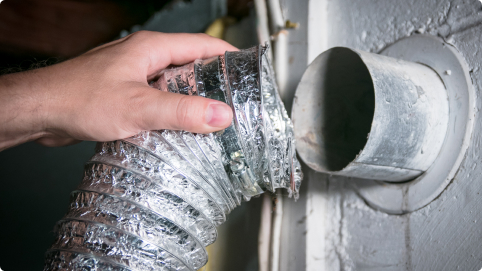Welcome to Filterbuy Local, the best Aeroseal HVAC air duct sealing service company proudly serving in and near the greater Palm City, FL area. Please let us know how we can help solve your Palm City Aeroseal HVAC air duct sealing needs with professional, affordable, and fast residential and commercial HVAC services by getting a free online quote or by giving our friendly HVAC specialists a call. We look forward to hearing from you!
Aeroseal HVAC Air Duct Sealing in Palm City FL
Duct sealing is among the cost-efficient solutions when it comes to prolonging the life of your HVAC system. It is also one of the fastest solutions for maintaining ideal temperatures inside the home.
Air duct sealing is a process that involves the use of special materials and techniques to seal leaks in existing air distribution systems. Aeroseal HVAC, based in Palm City, FL, uses advanced technology to reduce energy costs while improving indoor air quality.
Aeroseal HVAC’s air duct sealing services utilize patented aerosolized polymeric particles which can flow through even small gaps in the air duct system from supply registers to return grilles. These particles adhere to the ductwork's interior surfaces, creating a permanent bond with any areas where dust or other airborne contaminants have infiltrated over time. The result is a tightly sealed system that prevents warm or cooled air from escaping before it reaches its intended destination within the building.
Overview Of Benefits Of Sealing Air Ducts
Most homeowners are aware that the quality of their indoor air often depends on how well they maintain their heating, ventilation, and air conditioning (HVAC) systems. But what many don't know is that HVAC system performance can be further improved by sealing any leaks in their air ducts. Sealing air ducts has several benefits, from reducing energy costs to improving home safety.
One key benefit of sealing air ducts is greater cost efficiency for homeowners. By closing off existing holes or cracks in the ductwork, less warm or cool air escapes before reaching its destination inside the house. This means that conditioned air will not escape through leaky spots but instead reach its intended location efficiently without being wasted. This translates into lower electricity bills since it requires less energy to heat and cool your home when there are fewer leakage points along the way.
Another advantage of sealing air ducts is improved health and safety within the home environment. Leaky ducts allow dust, pollen, and other allergens to enter your living space more easily which can lead to respiratory problems such as asthma attacks or allergies flaring up due to increased exposure to irritants. In addition, some hazardous gasses may also infiltrate homes with unsealed air ducts, putting occupants at risk for serious illnesses like carbon monoxide poisoning if left unaddressed over time.
Sealing off these unwanted intrusions helps protect families from potential harm while providing peace of mind knowing that their HVAC system is working optimally without posing unnecessary risks to their wellbeing. With the numerous advantages associated with sealing air ducts, it's no wonder why so many homeowners turn towards this method as an effective solution for ensuring better household comfort and quality of life overall. Taking proactive steps towards maintaining a healthy indoor environment begins with understanding what aeroseal HVAC duct sealing entails.
What Is Aeroseal HVAC Duct Sealing?
Aeroseal HVAC air duct sealing is an innovative technology that seals leaks in the interior of a home's HVAC system. It provides homeowners with numerous benefits, such as improved energy efficiency, better indoor air quality, and reduced allergies and asthma symptoms. The process involves using pressurized aerosols to seal small holes or cracks inside the ducts.
This method is much more effective than traditional methods because it can reach areas that are difficult to access. Moreover, it eliminates dust particles from entering the environment since no materials need to be removed from the ducts during this process. Additionally, Aeroseal does not require any additional tools for installation and its application takes less time compared to other solutions available on the market.
There are three primary advantages of using Aeroseal for your HVAC system:
Energy Efficiency
- Sealing air ducts significantly reduces energy costs by preventing conditioned air leakage; up to 40% savings in heating and cooling costs have been reported.
- Improved airflow due to sealed connections increases overall comfort levels while reducing strain on equipment components and extending their life span.
Indoor Air Quality
- Properly sealed ductwork prevents unnecessary allergens from entering your home through gaps in the piping network, resulting in cleaner indoor air quality which helps reduce respiratory problems and illnesses caused by airborne contaminants.
- Lower humidity levels keep mold growth at bay and help prevent structural damage caused by water infiltration into walls or ceilings.
Cost Savings
- Duct sealing with Aeroseal requires minimal labor costs since there is no cutting or drilling necessary when applying product along seams or joints within a ventilation system; as a result, installation times are greatly decreased compared to traditional methods of sealing air ducts.
- Since only one visit is needed to apply Aeroseal instead of multiple visits that would otherwise be required when using manual techniques, customers save money over time by eliminating return trips associated with mechanical repairs or inspections typically needed after the installation has taken place elsewhere.
The cost-effectiveness combined with superior performance makes this technology an ideal choice for those looking to improve their HVAC systems without breaking the bank. In addition, Aeroseal offers warranties that guarantee satisfaction against manufacturer defects so customers have peace of mind knowing they made a sound investment into their homes' comfort needs.
Process For Sealing Air Ducts
Aeroseal HVAC air duct sealing is a process that combines advanced technology and pressurized sealant to effectively reduce leakage in residential, commercial, and industrial air duct systems.
The Aeroseal process begins by inspecting the system's accessibility; this includes ensuring that all vents and registers have been removed or opened up before applying any sealants. Next, the aerosolized sealant is injected into each vent register, where it adheres to the inner surface area of the ductwork. This helps ensure an even distribution throughout the entire system. Afterwards, pressure monitors are used to measure results and determine if successful sealing has occurred. Following verification of reduced leaks, project documentation is finalized before moving on to post-sealing processes such as cleaning around ventilation areas or conducting blower door tests for airflow performance checks.
By using the above-mentioned process, aeroseal HVAC air duct sealing can successfully create tight seals without causing damage to existing structures within a home or building’s interior walls or attic space.
Advantages Of Using An Aeroseal System
The use of an Aeroseal system to seal air ducts offers several benefits. From improved energy efficiency, enhanced indoor air quality, and increased comfort levels, the advantages of using this system are numerous. Here is a closer look at some of the main pluses:
- Improved Energy Efficiency: A properly sealed HVAC system runs more efficiently since it requires less energy consumption to maintain desired temperatures throughout your home or business. By eliminating leaks that allow conditioned air to escape, you can reduce heating and cooling costs significantly.
- Enhanced Indoor Air Quality: With fewer gaps for dust, dirt, and other contaminants to enter into the ventilation system, air sealing makes for cleaner air indoors. In addition to reducing allergens circulating through the space, this also helps extend the longevity of your HVAC equipment by preventing clogs from forming within its components.
- Increased Comfort Levels: When too much cool or warm air escapes through leaky ductwork during hotter or colder months, it can cause uncomfortable temperature fluctuations in certain areas of your property. Sealing these openings with Aeroseal ensures consistent climate control throughout all rooms without any hot or cold spots.
- Cost-Savings Over Time: The initial cost associated with having an Aeroseal technician come out may seem like an expense on top of regular maintenance fees; however, sealing your ductwork will pay off over time as lower monthly utility bills start rolling in due to reduced energy usage and improved airflow capabilities.
Cost-Savings From Sealing Air Ducts
The cost savings from sealing air ducts with Aeroseal HVAC in Palm City, FL are significant. Studies have shown that homes that seal their air ducts can save up to 30% on energy costs each year. This is because the sealed air ducts help keep conditioned air inside and prevent it from escaping into unconditioned spaces. Additionally, when an entire home’s forced-air system has been properly sealed, the amount of dust and allergens circulating through a home can be reduced significantly.
Not only does this reduce cleaning requirements as well as improve indoor air quality, but also helps maintain proper temperatures throughout the house more easily by reducing drafts and preventing hot or cold spots. Achieving these advantages requires professional installation of Aeroseal HVAC services in Palm City, FL for optimal results. Sealing your air ducts not only saves money over time but provides long-term benefits for both comfort levels and interior air quality.
Properly identifying leaks in your home's forced-air system is key to achieving maximum savings from sealing your air ducts.
Identifying Air Leaks In Your Home
Identifying air leaks in your home is essential for effectively sealing and preserving the energy efficiency of HVAC systems. To identify these leaks, it is important to inspect all areas where two different building materials join together or meet. This includes around windows, doors, vents, pipes, wires, chimneys, fireplaces, and other similar locations throughout the house. Visual inspection alone can often reveal an abundance of leaky sites that require attention.
In addition to visual inspections, homeowners should use a smoke pencil or incense stick to detect invisible air drafts entering or exiting their homes through cracks and crevices. Simply run the smoke maker along baseboards and frames near doors and windows; if there are any gaps present, they will become visible when small puffs of smoke start blowing out from them. Another helpful tool is using an infrared thermometer which measures temperature differences between indoor/outdoor surfaces at suspected leakage points. If a hole or gap exists in insulation material such as foam board or fiberglass batts, it will be identified by detecting higher temperatures outdoors than indoors around those spots.
Once all potential air leak sources have been located within a home's structure, proper methods must be taken to seal each one appropriately with weather-stripping tape or caulk so that no more conditioned air escapes into the environment (or outside air enters). It is advisable to find a professional contractor who specializes in aeroseal duct sealing technology to ensure the job is done correctly with long-lasting results.
The process of aeroseal duct sealing is a precise and technical procedure that requires the expertise of a professional. Finding someone to complete this job with accuracy, safety, and efficiency can be daunting but it is necessary for achieving optimal results. Coincidentally, many homeowners in Palm City, FL have found success by researching available professionals online or by asking friends for referrals.
A good way to start the search is by looking for certified individuals who specialize in HVAC services. The individual should have experience with air duct sealing and possess comprehensive knowledge about how the system works. Furthermore, they must have acquired proper credentials from reliable organizations such as the International Certified Indoor Air Quality Consultant (CIAQC), Building Performance Institute (BPI), or National Comfort Institute (NCI).
Additionally, confirm that the contractor has appropriate insurance coverage so that any losses incurred during work are taken care of if there’s an accident on-site. It may also be beneficial to read customer reviews before signing up with anyone; these provide valuable insight into their level of service, professionalism, and trustworthiness. Once all criteria have been met, compare quotes from different contractors and select one that offers competitive pricing without sacrificing quality.
Adhering to these guidelines will help ensure that you get your money's worth while having peace of mind knowing that your home’s ventilation system is being handled properly. Moving forward, maintaining clean air quality in your home requires understanding what types of pollutants exist indoors and finding ways to eliminate them effectively.
Maintaining Clean Air Quality In Your Home
Maintaining clean air quality in your home is essential to the health and well-being of your family. Poor indoor air quality can cause a variety of respiratory issues, such as allergies, asthma attacks, and other illnesses. Taking steps to maintain air quality includes reducing pollutants, controlling humidity levels, and using an appropriate HVAC system.
One way to reduce indoor air pollution is by keeping dust particles out of the house. Regularly vacuuming carpets and upholstery helps keep airborne allergens at bay. Dusting furniture and fixtures also makes a difference in overall air quality. Additionally, ensuring that all windows are properly sealed will help cut down on outside pollutants from entering the home.
Using an appropriate HVAC system for your home is important for maintaining good indoor air quality as well. Upgrading to newer technology with advanced filtration systems can help filter out harmful contaminants like pollen and pet dander from circulating through the house:
- Change or clean filters regularly;
- Install high-efficiency particulate arresting (HEPA) filters;
- Have ducts inspected by certified professionals for proper sizing and sealing.
The next step in ensuring clean air quality throughout your home is making sure you have professional installation services performed when upgrading existing systems or installing new ones.
Regulations And Standards For Aeroseal HVAC Systems
Regulations and standards for Aeroseal HVAC systems are important in ensuring a safe and efficient system. The Department of Energy (DOE) establishes the minimum requirements applicable to all residential buildings while local codes may require additional regulations or compliance with standards set by other organizations such as ASHRAE, UL, IMC, IRC, NFPA, etc.
The following table outlines some of the key regulations and standards that pertain to Aeroseal HVAC systems:
These regulations and standards provide comprehensive coverage when it comes to designing, installing, operating, maintaining, and servicing an Aeroseal HVAC system safely and efficiently. Contractors must follow these rules to meet code requirements and avoid risks associated with improper installations or repairs. By doing so, homeowners can rest assured that their Aeroseal HVAC system is up-to-date with current industry safety protocols which will help reduce energy bills over time.
Frequently Asked Questions
What Are The Environmental Benefits Of Air Duct Sealing?
Air duct sealing is a process used to reduce air leakage from the ventilation system in homes and commercial buildings. It has been gaining popularity due to increasing awareness of its environmental benefits.
Firstly, air duct sealing can increase energy efficiency significantly by reducing the amount of conditioned air lost through leaky vents or cracked seams. By improving airflow throughout the building, less energy is needed to maintain desired temperatures. As a result, household heating and cooling costs are lowered for homeowners as well as businesses who invest in this service.
The second benefit of having an efficient HVAC system is that it improves indoor air quality by preventing dust and other airborne particles from entering living spaces through leaks or cracks. Additionally, sealed systems ensure proper ventilation which helps circulate fresh air into the home while expelling harmful pollutants out of the house – all without compromising temperature control. In addition, here are some benefits:
- Reduced exposure to allergens such as pollen, pet dander, mold spores
- Improved humidity regulation in humid climates
- Decreased risk of structural damage caused by moisture buildup
Finally, since fewer resources are required to heat or cool a structure with an efficiently sealed HVAC system; there is a corresponding decrease in pollution levels created during operation. Moreover, if electricity bills become lower due to more efficient usage then dependence on fossil fuels could be decreased too over time – resulting in greater sustainability initiatives overall within society at large.
How Long Does It Take To Aeroseal An HVAC System?
Air Sealing an HVAC system is a process that seals air ducts, preventing loss of heated or cooled air. Sealing these ducts can improve the energy efficiency of the home and reduce utility bills. The question arises: how long does it take to aeroseal an HVAC system?
The time required for Air Sealing varies depending on several factors, including the size of the home, the type and complexity of the HVAC system, and whether there are any areas where access might be limited. Generally speaking, sealing one average-sized house typically requires between two and four hours. It may require more time if additional work needs to be done to make sure all cracks and leaks are sealed properly.
In addition to assessing how much time will be needed for aerosolizing, it is important to consider other benefits as well. Aerosoling helps maintain optimal temperature levels within homes so that less energy is used for heating or cooling purposes. Additionally, this process can help filter out allergens such as dust mites from circulating through the air ducts thereby improving overall indoor air quality.
Overall, air sealing an HVAC system provides many advantages beyond just saving money on utilities. In most cases, it takes approximately two to four hours to complete; however, this duration can vary depending on certain variables like the size of the space being serviced and accessibility issues. Ultimately, anyone considering having their HVAC system aerosed should consult with a qualified professional to determine what length of time will be necessary for completion.
Are There Any Health Risks Associated With Aeroseal HVAC Systems?
Aeroseal technology is a process that seals air ducts in heating, ventilation, and air conditioning (HVAC) systems. The question arises: are there any health risks associated with the use of Aeroseal HVAC systems? To answer this question it is important to consider the components and application of Aeroseal technology.
The main component of an Aeroseal system is sealant spray, which contains water-soluble polymers made from proprietary ingredients. This material gets injected into the pressurized air ducts, where it expands and adheres to surfaces, forming a flexible seal. As such, no materials come in contact with the indoor environment; however, particles can be released during the sealing process itself.
In terms of safety considerations for people near or inside sealed premises, research has shown that aerosolized particles disperse rapidly after injection due to strong airflows within the HVAC system. Therefore exposure levels remain low when compared to other common sources indoors such as cooking fumes or cigarette smoke. Furthermore, since most of these particles settle on dust particles already present in the ductwork, they become inert and harmless quickly due to coagulation processes taking place between them and larger existing dust particles. All this leads us to conclude that aero sealing may not pose significant health risks under normal circumstances if used correctly.
To ensure best practices while using this technology, proper installation techniques must be followed by trained personnel using appropriate protective equipment including respirators and face masks during spraying operations. Additionally, periodic maintenance should be performed on all parts of an Aeroseal system as part of routine service schedules for its optimal functioning.
Can Air Duct Sealing Be Done DIY?
Air duct sealing is a process used to improve the efficiency of an HVAC system by reducing air leakage. It can involve either manual or automated techniques, depending on the size and complexity of the job. As with any home improvement project, many homeowners may wonder if it is possible to do such work themselves, rather than hiring a professional contractor. Like untying a knotty Gordian Knot, DIY air duct sealing has its benefits as well as drawbacks.
To begin with, attempting a DIY approach could save money in terms of labor costs and material expenses associated with hiring professionals for the task. Additionally, those who take this route usually have more control over when and how their projects are completed; thus providing greater flexibility compared to relying on outside contractors.
On the other hand, performing air duct sealing without prior experience or proper training poses significant risks that must be taken into consideration before proceeding down this path. For instance, certain materials and equipment must be properly handled during installation to avoid potential health hazards from improper use or contact with hazardous substances like asbestos-containing insulation products found occasionally within some older systems. Furthermore, incorrect methods for sealing can lead to increased moisture build-up inside walls which can create structural damage as well as encourage mold growth due to condensation accumulation caused by poor ventilation design flaws. Bypassing these issues altogether could mean an even bigger financial burden later on if they were not addressed correctly during the initial installation stages.
Are There Any Special Requirements For Aeroseal HVAC Systems In Palm City, FL?
When it comes to air duct sealing, many homeowners are tempted to take on the project themselves as a DIY job. However, when considering Aeroseal HVAC systems in Palm City, FL there could be certain special requirements that need consideration:
- Installation methods may differ from standard techniques
- Local building codes and regulations should be taken into account
- It is important to consider any warranties or guarantees offered by manufacturers
- Professional advice may be needed before beginning work on any air duct system
Due to the complexity of such projects, professional help is essential for successful installation. In addition, local laws must also be adhered to to ensure compliance with all relevant regulations. This means researching local building codes and permits which can add further complications if not done correctly. Furthermore, manufacturer’s warranties and guarantees should also be considered before undertaking any repair or replacement works.
It is advisable for anyone planning an aeroseal HVAC system in Palm City FL., to seek out the assistance of an experienced technician who knows the particular product and its required procedures to achieve optimal results. Therefore, even though attempting DIY repairs can save money initially; it isn't worth risking damage or failure due to lack of experience or resources.
How much does it cost to seal leaky ductwork?
Sealing leaky ductwork is a common practice in HVAC maintenance that can improve energy efficiency and indoor air quality. The cost of sealing leaky ductwork can vary depending on the size of your home, the extent of the leaks, and the contractor you hire. On average, the cost can range from a few hundred to a few thousand dollars.
Is sealing your ducts worth it?
Sealing your ducts can be worth it for several reasons. By sealing leaky ducts, you can improve the efficiency of your HVAC system, reduce energy bills, and enhance comfort in your home. Additionally, sealing ductwork can help prevent the infiltration of dust, allergens, and pollutants into your living space, leading to better indoor air quality.
How much does Aeroseal duct sealing cost?
Aeroseal duct sealing is a technology that seals leaks in ductwork from the inside using a polymer-based sealant. The cost of Aeroseal duct sealing can vary depending on the size of the project and the contractor you hire. On average, Aeroseal duct sealing can cost between $1,500 to $3,500.
Do HVAC ducts need to be sealed?
HVAC ducts do need to be sealed to prevent air leaks, improve energy efficiency, and maintain indoor air quality. Leaky ducts can lead to energy waste, uneven heating or cooling, and poor indoor air quality. Sealing ductwork is a critical step in ensuring that your HVAC system operates efficiently and effectively.
How long does duct seal last?
The longevity of duct seals can vary depending on the type of sealant used, the quality of the installation, and the conditions within the ductwork. However, a well-installed duct seal can last for several years, providing long-lasting benefits in terms of energy efficiency and indoor air quality.
What is the best duct sealer?
Several products on the market are commonly recommended for duct sealing, including mastic sealants, foil tape, and duct sealants. The best duct sealer for your specific needs will depend on factors such as the type of ductwork you have, the location of the leaks, and your budget.
What is the best duct sealant?
Duct sealant is a substance used to seal leaks in ductwork and improve the efficiency of HVAC systems. The best duct sealant for your needs will depend on factors such as the type of ductwork you have, the location of the leaks, and your budget. Common types of duct sealants include mastic sealants, aerosol sealants, and foil tapes.
What is the best practice for duct sealing?
The best practice for duct sealing involves identifying and sealing leaks in the ductwork using appropriate sealants and materials. Proper duct sealing can help improve energy efficiency, indoor air quality, and the overall performance of your HVAC system. It is important to work with a professional HVAC contractor to ensure that duct sealing is done correctly.
What are the cons of AeroSeal?
While Aeroseal duct sealing offers many benefits, there are some potential drawbacks to consider. Some cons of Aeroseal include the initial cost of the service, the time it takes to complete the process, and the possibility of the sealant material degrading over time. Additionally, Aeroseal may not be suitable for all types of ductwork or sealing needs.
How do I know if my air ducts are leaking?
You can check if your air ducts are leaking by conducting a visual inspection of the ductwork for signs of damage, loose connections, or visible leaks. Additionally, you may notice issues such as uneven heating or cooling, higher energy bills, or poor indoor air quality, which can indicate that your air ducts are leaking.
Does AeroSeal qualify for the tax credit?
Aeroseal duct sealing may qualify for tax credits or incentives offered by federal, state, or local governments for energy-efficient home improvements. To determine if Aeroseal qualifies for tax credits in your area, it is recommended to consult with a tax professional or check with relevant government agencies for current information on available incentives.
How long should air ducts last?
The lifespan of air ducts can vary depending on factors such as the quality of installation, maintenance practices, and environmental conditions. On average, well-maintained air ducts can last for 10-15 years or more. Regular inspections, cleanings, and repairs can help extend the lifespan of your air ducts and ensure optimal performance of your HVAC system.
Conclusion
The use of air duct sealing has become increasingly popular as people seek to reduce their environmental footprint, save money on energy bills, and improve indoor air quality. Aeroseal HVAC systems are an efficient way to seal the air ducts in a home or business and can be completed relatively quickly with minimal disruption. However, it is important to consider the potential health risks associated with such work before proceeding. Additionally, there may be special requirements for those living in Palm City, FL that must be taken into consideration before beginning any project.
When considering whether or not to undertake this type of work oneself, one should weigh the cost savings against the potential risk involved. Similarly, professional installation may also need to be considered depending on local regulations and individual skill levels.
While aeroseal HVAC systems offer many advantages in terms of efficiency and reduced environmental impact; careful research and planning must go into deciding if such a system is right for your home or business in Palm City, FL. Professional help may need to be sought out depending on local laws and regulations whilst ensuring all safety protocols are properly observed at all times during the installation process itself.
Here is the nearest branch location serving the Palm City area…
Filterbuy HVAC Solutions - West Palm Beach FL
1655 Palm Beach Lakes Blvd ste 1005, West Palm Beach, FL 33401
(561) 448-3760
https://maps.app.goo.gl/AiRzEnWDJCmsKBvi7

.webp)
.webp)
.webp)
.webp)






